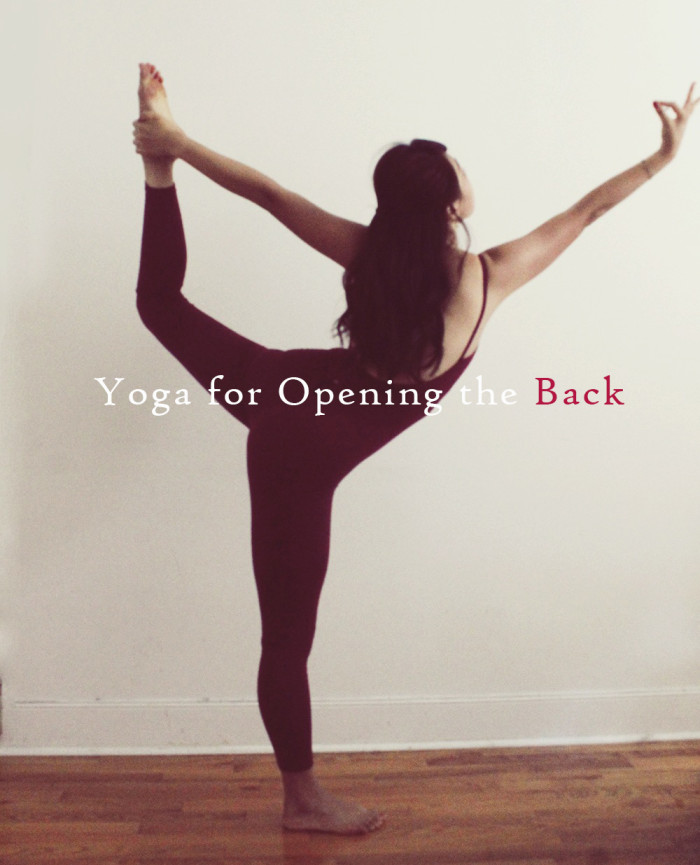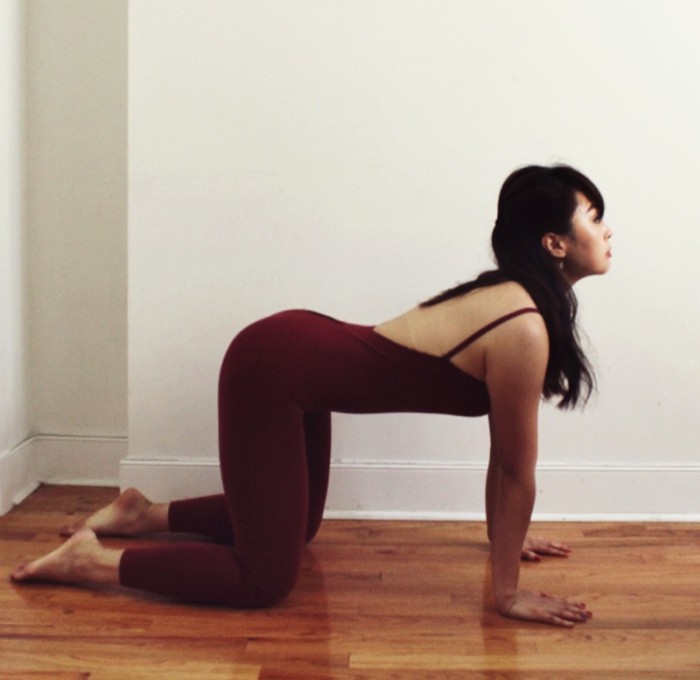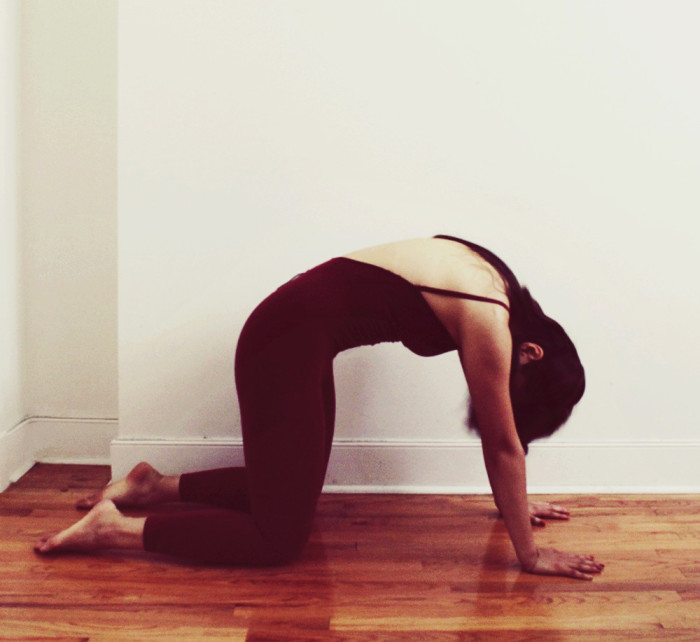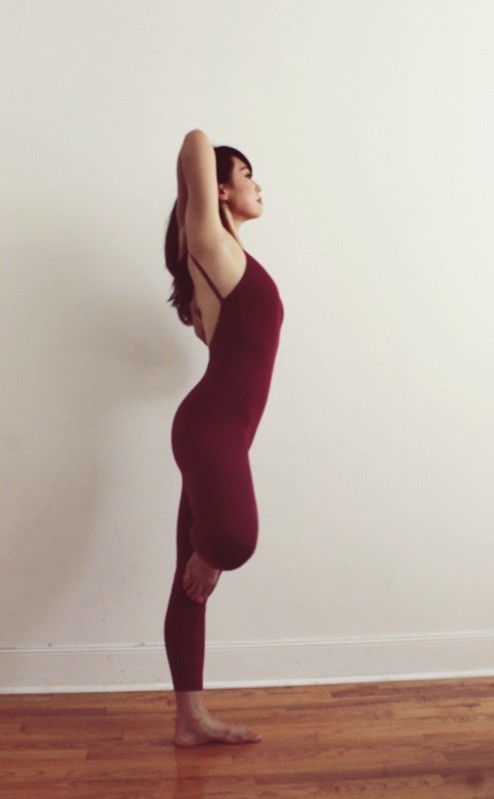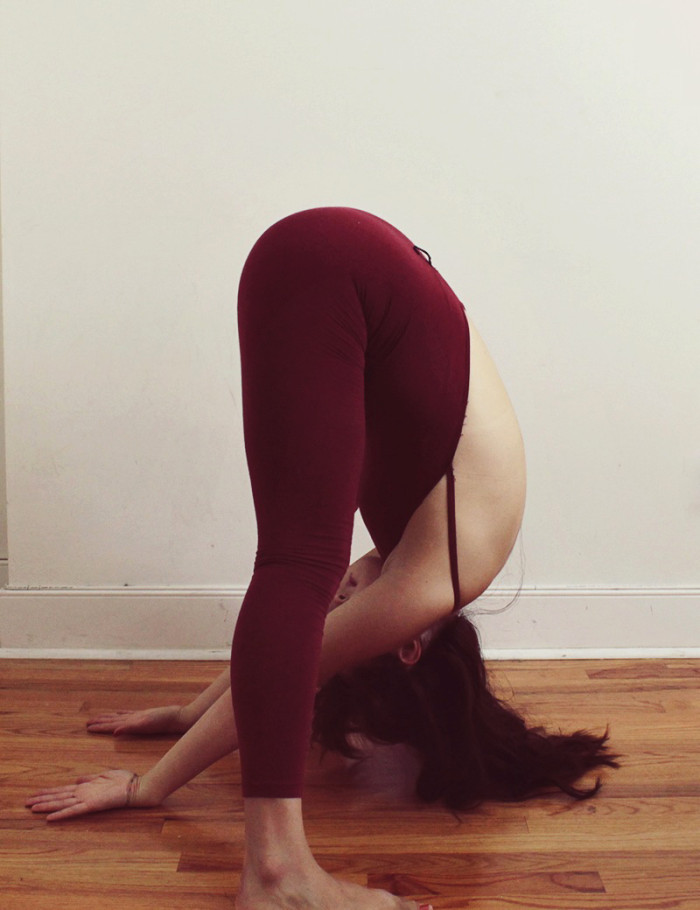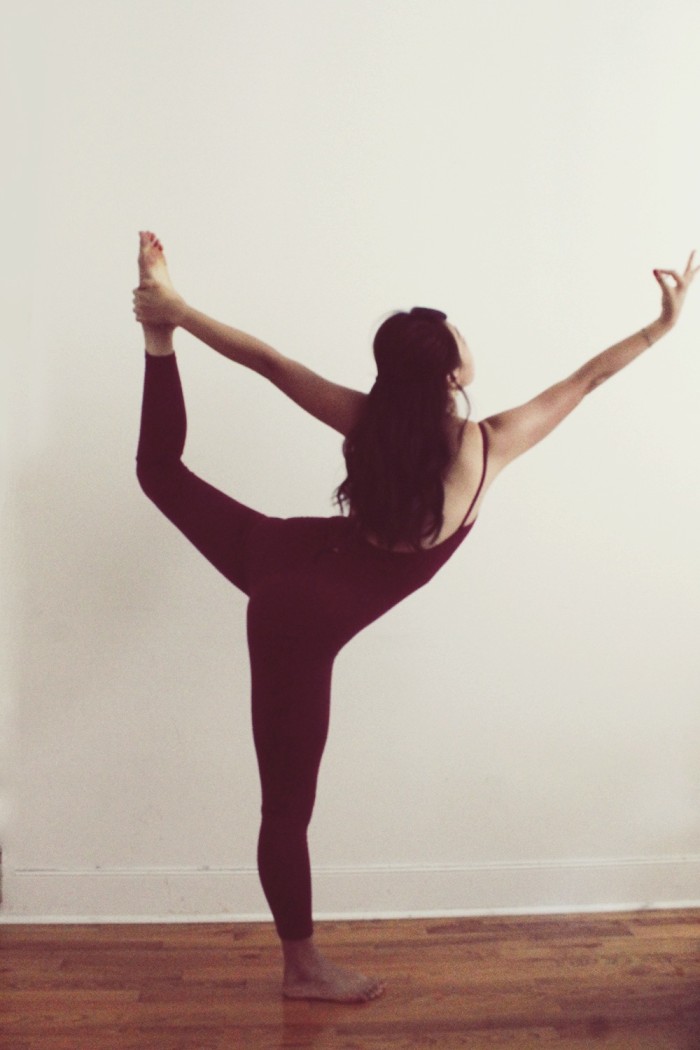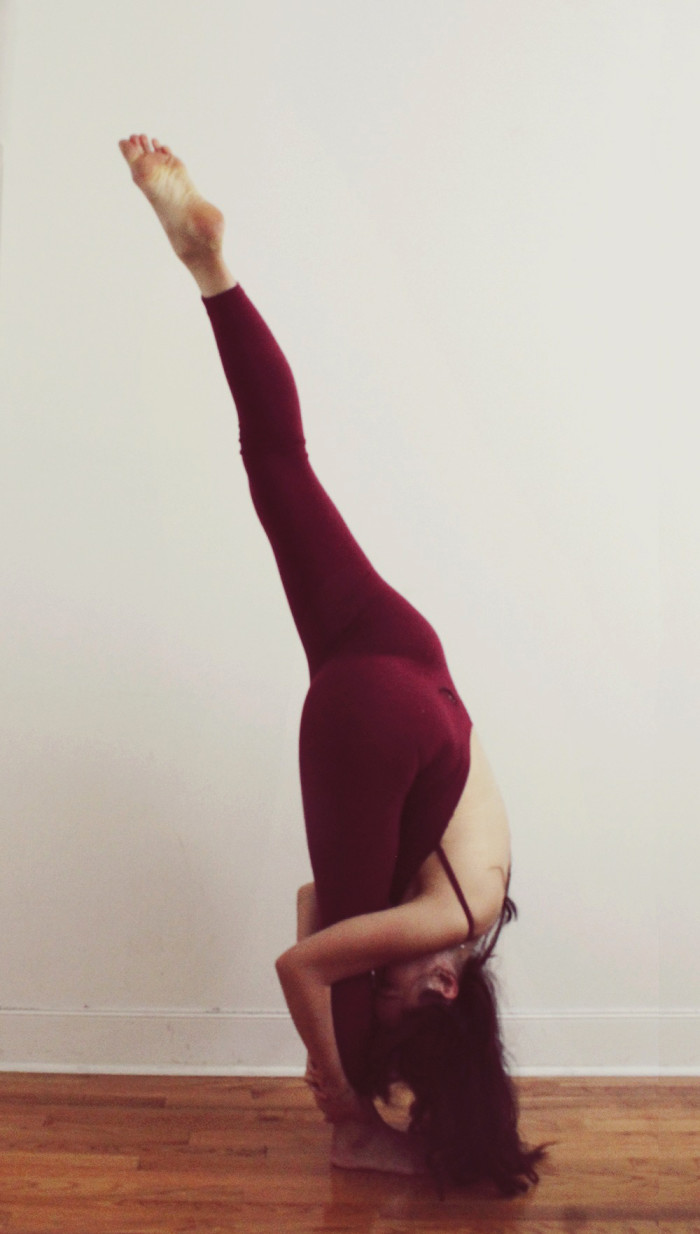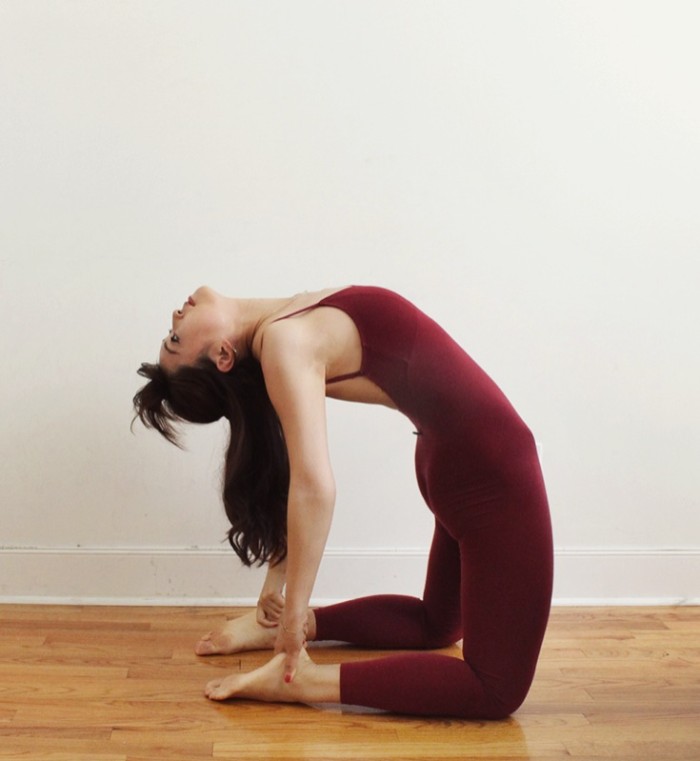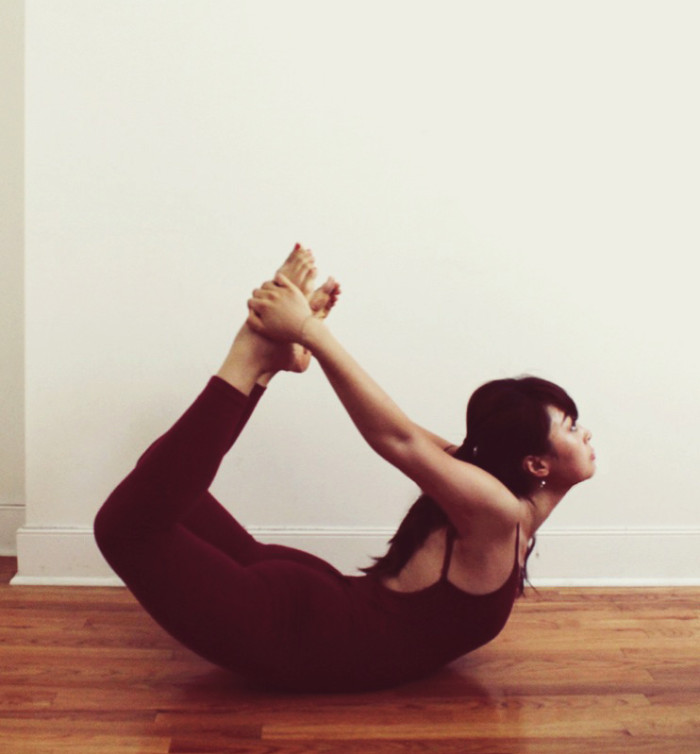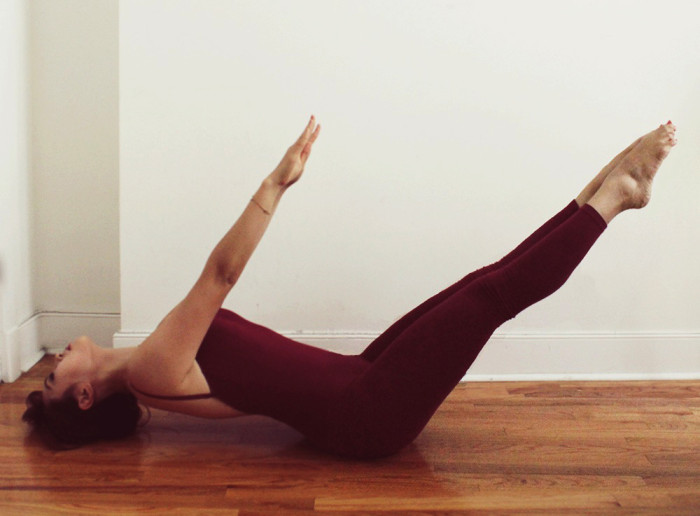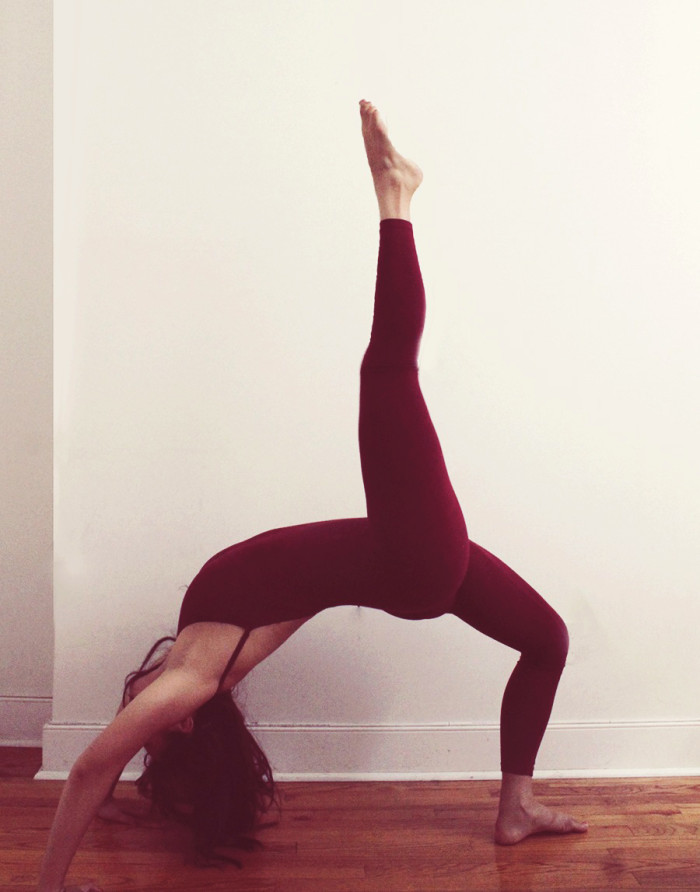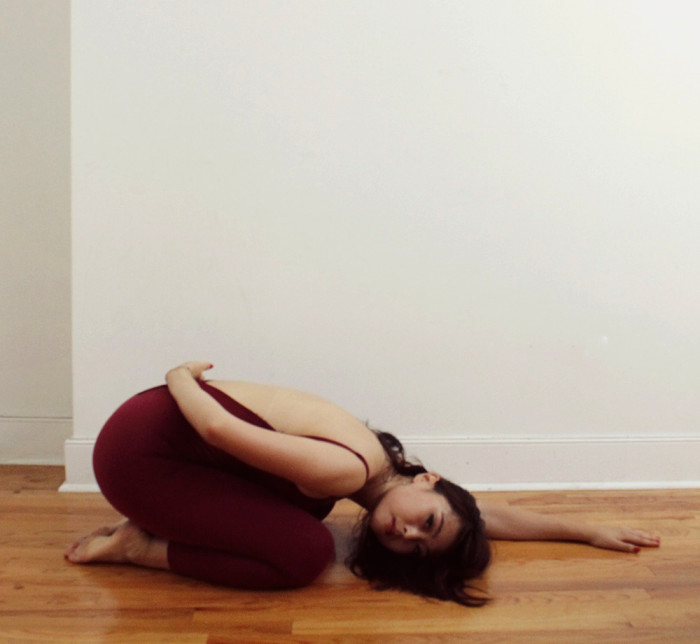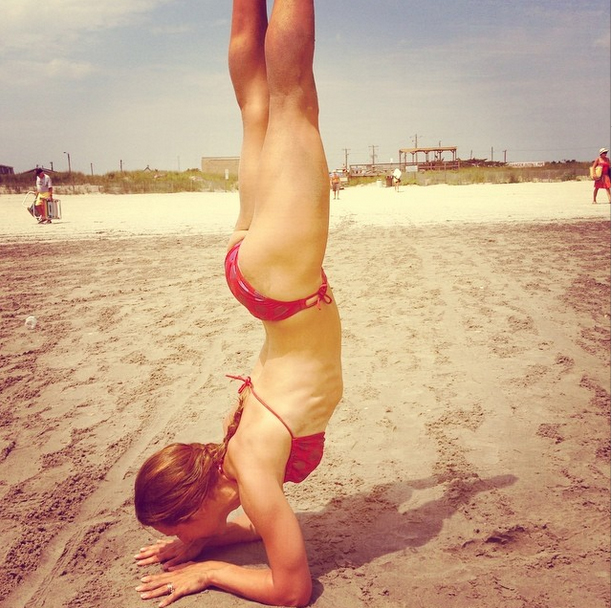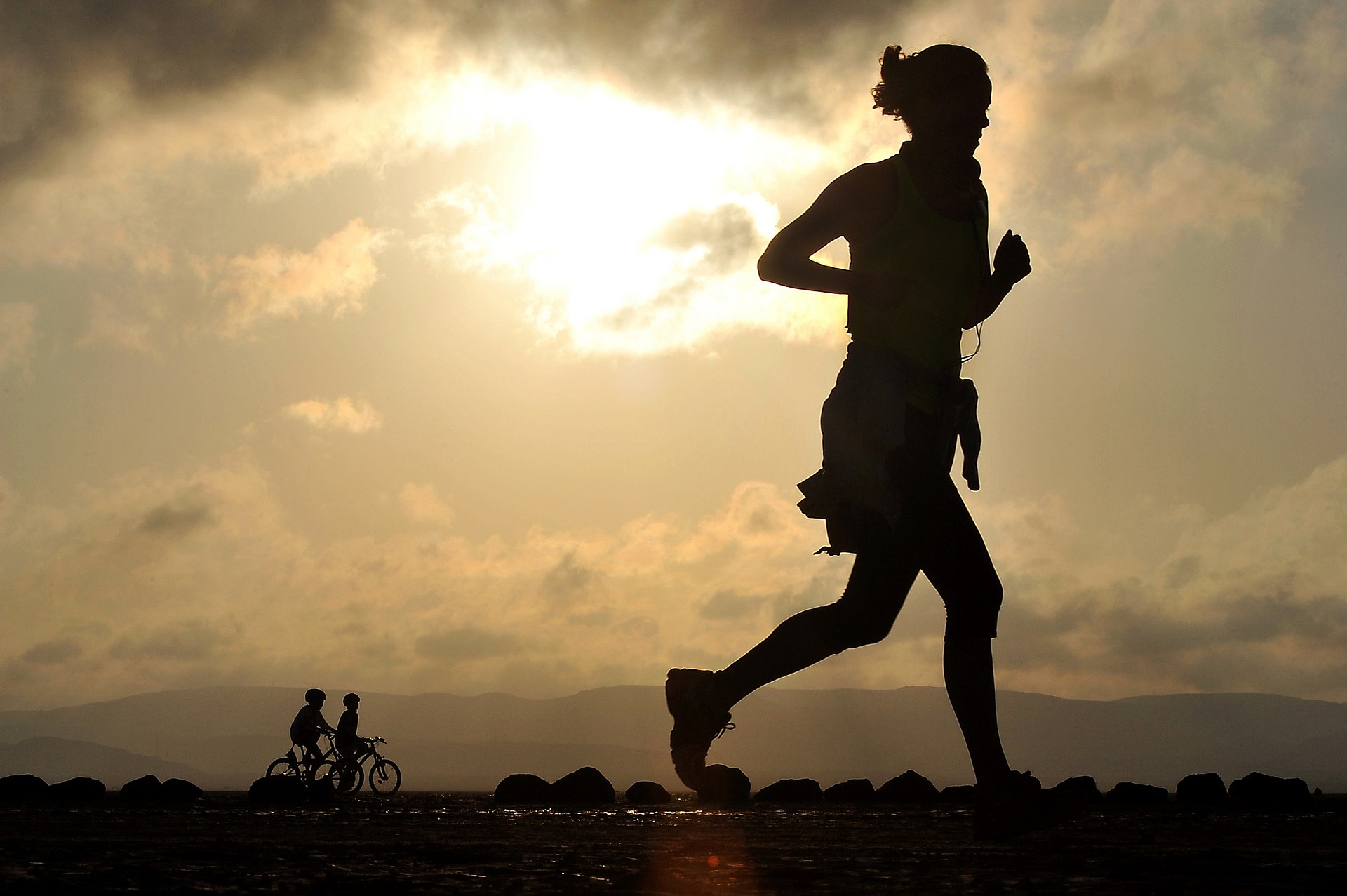I have always had the most flexible hips. I could stay in butterfly fold-over stretch for hours and I have always been able to do the splits. My back is a completely different story: as a dancer, arabesques were always far more challenging to me than kicks to the front or side. Not only that, my spine just feels super straight no matter how much I try.
Since I no longer really dance, this should concern me a lot less, but lately I’ve been thinking of the way our bodies are connected to our minds and souls. If my flexible hips are a sign that I am in touch with physical joy, I believe my stiff spine has to do with my stubborn, unyielding personality. We commonly say to people who seem weak, “grow a backbone.” And so, people who are self-confident are thought of as “having a backbone.” Of course, self-confidence is great–but if it gets to the point of being always so self-possessed as to never give in to anyone, that’s not positive, either. This can lead to less flexibility, not just physically but emotionally and spiritually, too.
Opening our spine, on the other hand, can lead to more open mind and generous disposition. Also, vast majority of us spend most of our days with closed, curled up spine, leading to pain, stress, even headaches and depression. If you’ve ever had to pound your upper back with a fist at the end of the work day (I have!), yoga for opening the back will do wonders. Plus, strengthening the muscles in your back are crucial for your overall health. Your core isn’t just the muscles in the front of the body, but also the back.
Cow Pose
Begin on your hands and knees, with your spine parallel to the floor. Inhale and exhale a few times, then inhale deeply and curve out your spine while looking up.
Cat Pose
From cow pose, exhale and curve your spine inward into cat pose. Slowly warm up your spine with repeated cat/cow, as much as you need. From here, you may raise your hips and come into downward dog to begin your vinyasa sequence (sun salutations).
Tree pose
After flowing through your vinyasas, come to stand still in tadasana (mountain pose). Reach with your right arm over your shoulder down the back; at the same time, reach with your left hand in the middle of your back, in a bind. You may keep both feet on the ground or raise one foot up into tree pose.
Forward fold
From tree pose, jump or step out your feet about 3 1/2 feet, toes pointing slightly in. Clasp your hands behind you and swan dive into forward fold, letting the weight of your hands keep opening the back.
Release the hands in front of your face, palms facing up, for an even deeper stretch through your spine.
Dancer Pose
Come into tadasana. Pick up one foot and close your knees together so that your balancing knee is next to your supporting knee, with the foot behind you (like in quad stretch). Reach for your foot behind you and kick into your hand while arching your spine and pivoting forward from the hips. Use your other hand to guide your energy to the front of the room.
Standing split (urdvha prasarita ekapadasana)
Coming from dancer into standing split requires balance and control all the way through your spine. Wrap your core muscles and slowly fold over your supporting leg while lifting your back leg toward the ceiling.
Camel pose
Come onto your knees (hip distance apart to start–as you become more advanced, you may put your knees and feet together). Exhale and rest your hands behind your lower back like you’re putting your hands in your back pockets. Carefully reach for your heels, allowing your spine to stretch all the way. If you are advanced, you may place your palms on the entire soles of the feet. Come slowly back up, and pull your hips back into child’s pose.
Bow pose
From child’s pose, unfold your legs behind you. Reach for your feet behind you with your hands and grab the outsides of your feet, keeping your knees and feet close together.
Uttana Padasana
From bow pose, lie on your back. Exhale and arch your back so that your crown is touching the floor. Exhale, then raise your legs and arms so that you are being supported by the top of your head and your bottom. This pose opens and tones the neck and back, and also keeps your thyroid healthy. Slowly lower down.
Wheel
From lying down, bring your heels next to your hips with the knees pointing to the ceiling, and your hands by your head, fingertips pointing toward the shoulders. Exhale and push with your feet and hands, arching your back and pushing your pelvis forward. From wheel you can try other variations, such as raising one leg toward the ceiling, or coming up onto the balls of your feet. Lower down slowly into savasana.
Child’s pose
If you choose to go into child’s pose for more release through your back, you can play with different variations: Arms to the front; arms by your side; arms reaching diagonally; or peeking underneath one arm. You may also reach behind with one hand and rest it on your back, releasing your head to the side.
Also see: Yoga for a Better Sex Life
Vinyasa Flow Yoga for Stress Relief
__
Photo: Peaceful Dumpling

